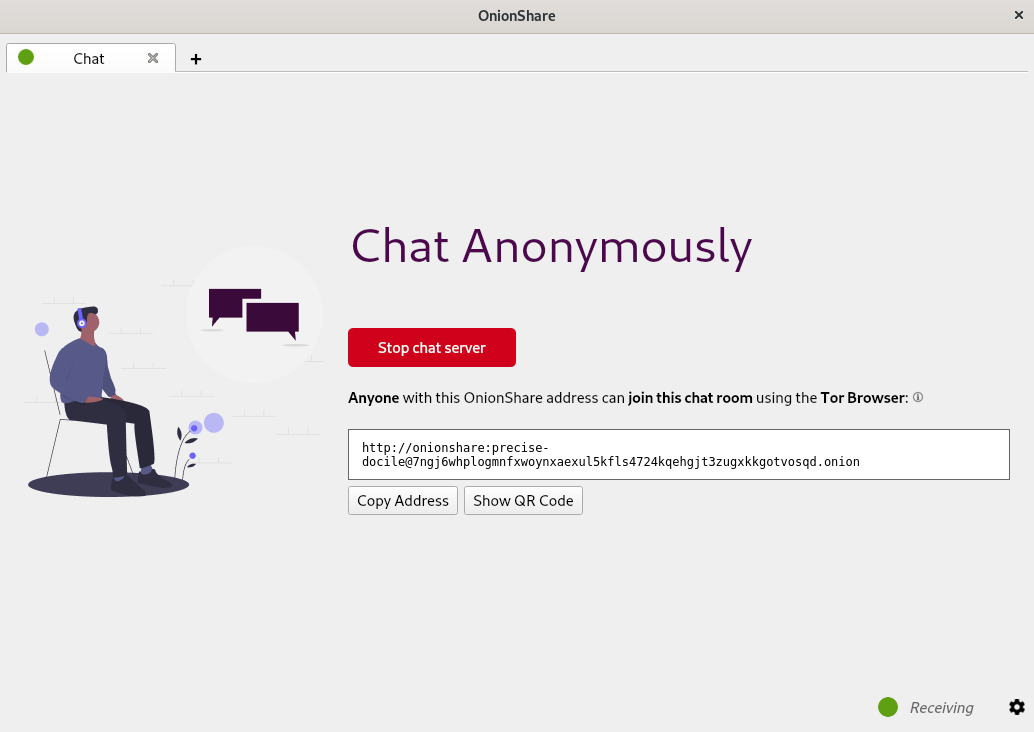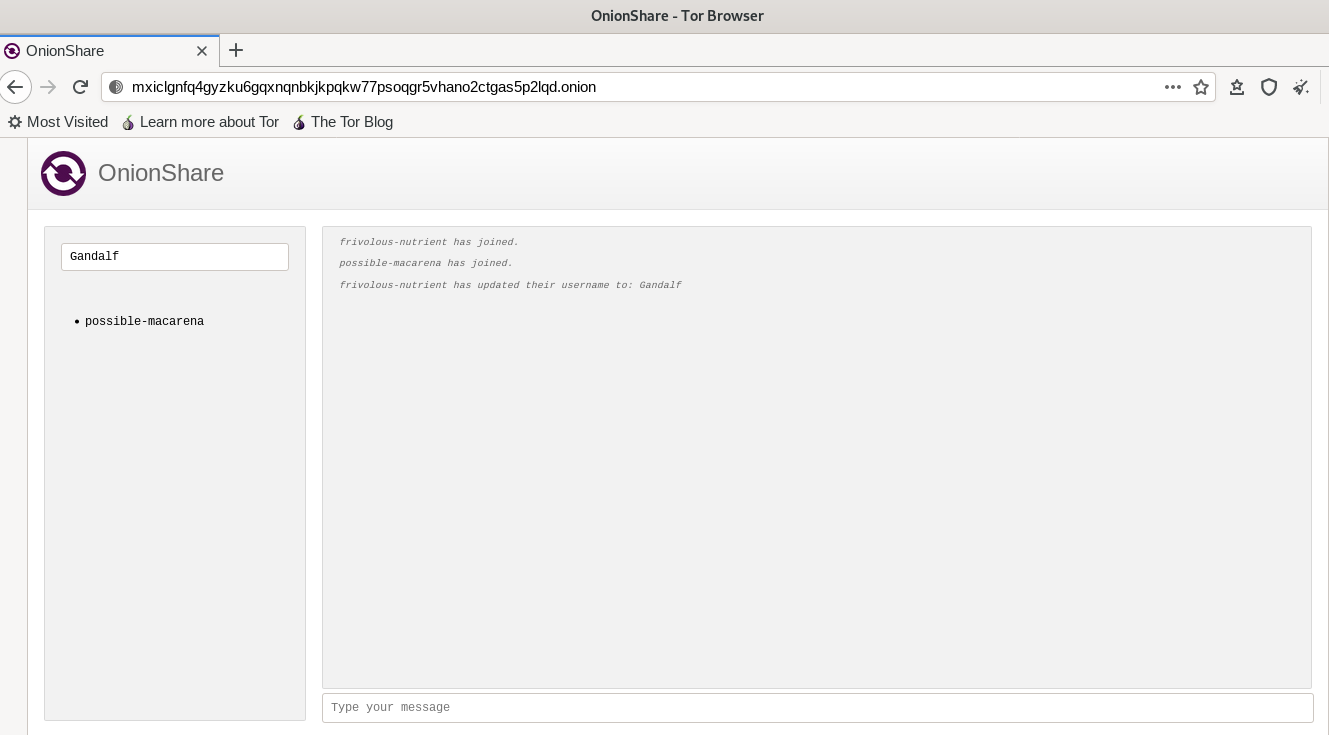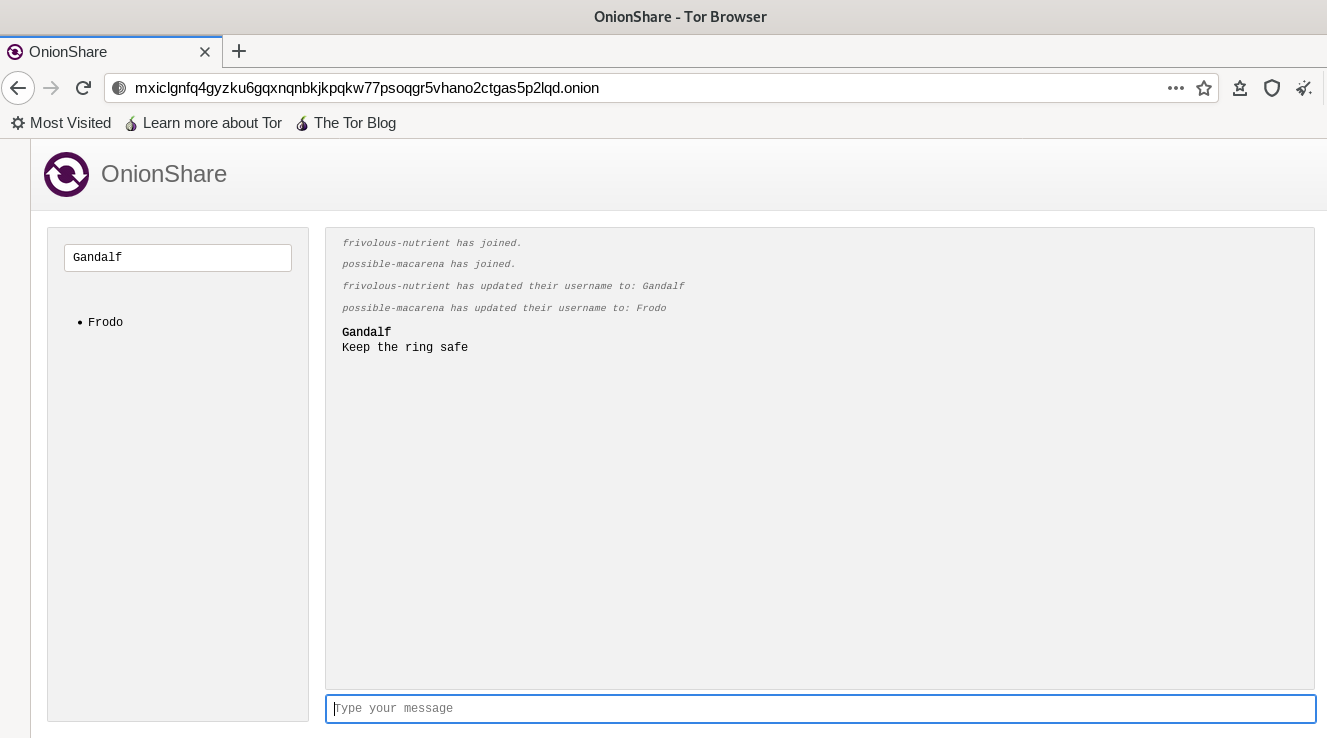Saptak's Blog Posts
Anonymous Chat using OnionShare
Posted: 2021-02-26T15:22:50+05:30
So the new OnionShare is out and it has a bunch of exciting new features and some improvements in the UI/UX designs of the tool. One of the main new features that I helped build was the anonymous chat feature in OnionShare. Just like the other modes (share, receive, and website), there is now a chat mode. So if you want to start a chat service, you just start the chat server, share the onion address of the server with people you want to chat with, everyone opens this onion address in Tor Browser and voila! You have an anonymous chat.
Let's dive in a little deeper into the feature.
Why do we need an anonymous chat?
A common question that we got during developing this feature is what's the use of an anonymous chat room since we already have end-to-end encrypted messaging apps. It leaves a lot fewer traces.
The way we achieve this is very simple. There is no form of storage whatsoever in OnionShare chat mode. The chat is not persistent. The chat server stores no information at all (not even the usernames of people chatting). So once the chat server is closed, and the Tor Browser tab with the chat client is closed, there is no data (or metadata) related to chat that remains, even in the person's system who started the server. Hence, it leaves much less trace compared to other chat applications.
A good example of the above as mentioned by Micah in his blog is:
If, for example, you send a message to a Signal group, a copy of your message ends up on each device (the devices, and computers if they set up Signal Desktop of each member of the group). Even if disappearing messages is turned on it’s hard to confirm all copies of the messages are actually deleted from all devices, and from any other places (like notifications databases) they may have been saved to. OnionShare chat rooms don’t store any messages anywhere, so the problem is reduced to a minimum.
Given that the OnionShare chat feature works over the onion network, so it also has the additional anonymity feature. Also, adding to the anonymity feature, OnionShare chat doesn't need any form of signing in. Hence, people chatting can stay anonymous, and everything happens inside the tor network. One can just start a chat server, share the link via some disposable way, and then wait for the other people to join while maintaining anonymity.
Because it's an onion service, there is no way for an attacker to eavesdrop on the messages. The closest they can get is if they run a malicious Tor rendezvous node that's chosen for the onion service, they'll be able to spy on encrypted onion traffic. So, there's no capturing ciphertext to decrypt later on.
So what happens under the hood?
The chat feature is dependent on flask-socketio and eventlet for the WebSocket server implementation, and socket.io client js for the frontend implementation of the chat client. So when a chat server is started, the WebSocket is started in a namespace "/chat". Whenever a new user joins the link, they are given a randomly generated username and they are added to the room "default". There is only one room, and the actual name of the room can be set from the OnionShare settings-related code, but it doesn't really impact anything in the implementation. Both the room name and the randomly generated username are stored in a flask session. But that information is also completely gone once the chat server is stopped. The room and username information are only there to emit the messages properly.
You can also change the randomly generated username to a username (or pseudo username) of your choice for that particular session.
There are two main types of messages:
- status messages - these are sent from the client to the server only when a new user joins or someone updates their username. The status message is then broadcasted to all the other connected clients, who will then see it as a form of a status message in the chat window.

- user messages - these are sent when a user sends a message. All messages are broadcasted, so in case you share the link to multiple users, there is no concept of private message and everyone connected to the room can view your messages. Hence, sharing the onion link securely is important.

All of these WebSocket communication happens over the Tor onion services. OnionShare in itself doesn't implement any encryption algorithm to the chat and heavily relies on the Tor onion service's encryptions for the same. The message from the client to the OnionShare server is E2EE as it goes via Tor's onion connection. Then the OnionShare server broadcasts the message to all the other clients connected to the chat room through their E2EE onion connection, over WebSockets.
So what now?
I feel, as of now, the OnionShare anonymous chat is great if you quickly want to have an anonymous, secure, non-persistent conversation with someone or a group of people. It is also great if a whistleblower wants to share some details over chat with a journalist and then remove all traces of that conversation completely. But I feel if someone needs to host a chat server for a long time where people can connect anonymously, this is probably not the best solution for that.
There are still some issues that we will hopefully improve in the next releases. Firstly, we need to try and make it a bit more asynchronous. Right now, if left inactive for a long time, the Tor connection over WebSocket is sometimes dropped which isn't a great user experience. We are working on improving that.
Also, we will improve the UI for the chat more to give a better user experience.
With the new tabs feature, one can have all different modes (even multiple servers of same mode) running at the same time. So you can have a chat server and share mode server running at the same time. All the modes are very independent of each other and hence don't affect one another in any way.
I hope you all enjoy the new chat feature and leave feedbacks/suggestions on how to improve it. You can also read more about this and other features at docs.onionshare.org
It works in Firefox, but not in Tor Browser
Posted: 2018-01-25T12:11:00+05:30What is tor and tor browser?
Tor browser and Firefox
If you’ve used Tor, you’ve probably used Tor Browser, and if you’ve used Tor Browser you’ve used Firefox. By lines of code, Tor Browser is mostly Firefox -- there are some modifications and some additions, but around 95% of the code in Tor Browser comes from Firefox.So, basically, Tor Browser is built on top of firefox after applying some Privacy and Security patches. But this also means, to update Tor Browser, everytime a new firefox version comes means update the Privacy and Security patch codes to make them compatible with the new version of the browser. The latest version of Tor Browser is thus often not built on top of the latest version of Firefox. So how do you know if a feature is compatible with tor or not?
Will it work in Tor browser?
- Start your tor browser. Open About section and there you can find the version of Firefox which is being used.
- Alternatively, You can check the release notes for Tor browser to know about the Firefox version. So right now according to the release blog of the latest Tor browser till date, it is built on top of Firefox 52.5.0
- Go to website https://caniuse.com/
- Search for the feature you are wanting to use.
- Then, click on show all to get the compatibility over all the versions of the common browser.
- Now, to understand whether a feature is compatible, check for the Firefox version on top of which the Tor Browser is built, latest being 52.5
- So, I, for example, checked Firefox 52 for the compatibility of CSS Masking properties, which reveals that before Firefox 53, there was only partial support for CSS Masking.